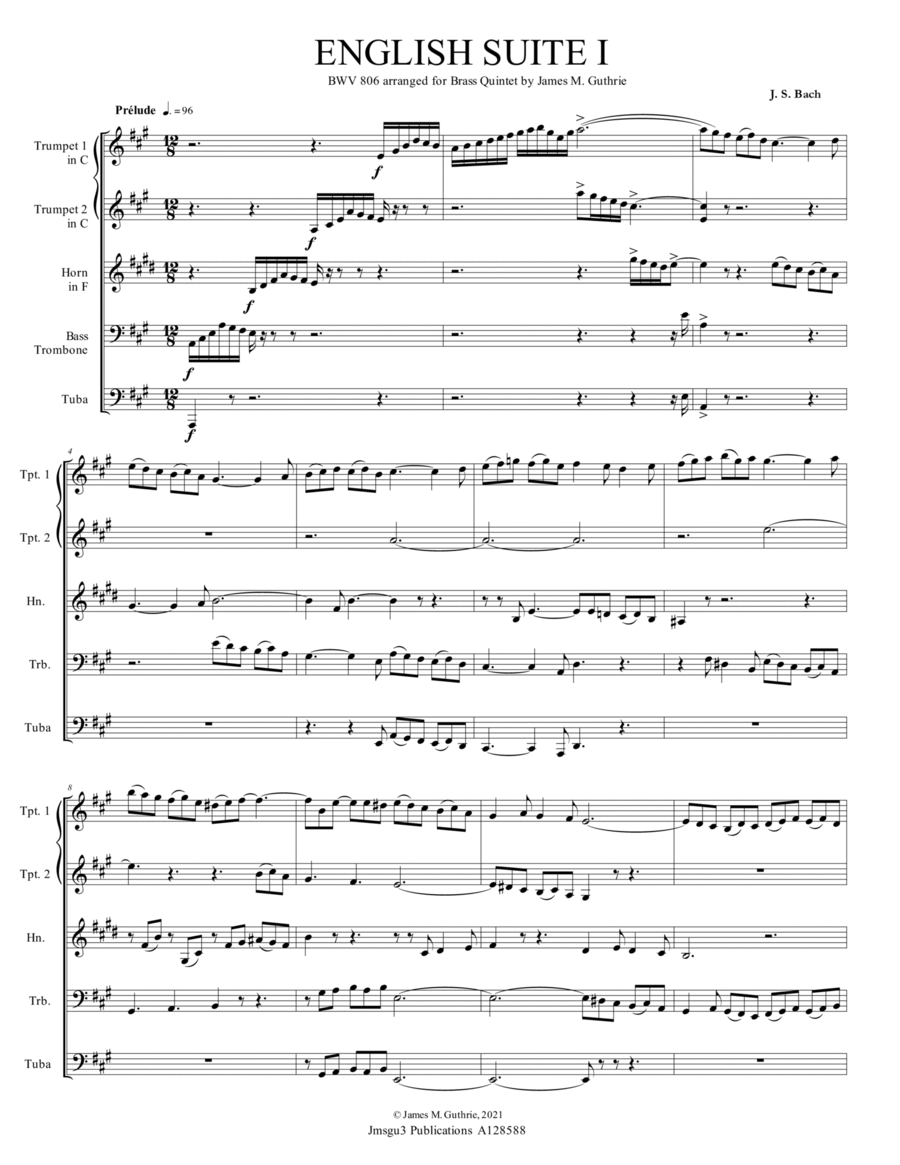Brass Ensemble - Level 4 - Digital Download SKU: A0.518409 Composed by Johann Sebastian Bach. Arranged by James M. Guthrie. Baroque,Contest,Festival,Standards,Traditional. Score and parts. 416 pages. Jmsgu3 #129102. Published by jmsgu3 (A0.518409). J. S. Bach: English Suite No. 1 BWV 806 Duration: 23:35 Score: 25 pages Contents: Prelude, Allemande, Courante I, Courante II, Double I, Double II, Sarabande, Bourree I, Bourree II, Gigue J. S. Bach: English Suite No. 2 BWV 807 Duration: 20:15 Score: 33 pages. Contents: Prelude, Allemande, Courante, Sarabande, Bourree I, Bourree II, Gigue J. S. Bach: English Suite No. 3 BWV 808 Duration: 16:50 Score: 29 pages Contents: Prelude, Allemande, Courante, Sarabande, Gavotte I, Gavotte II, Gigue J. S. Bach: English Suite No. 4 BWV 809 Score: 28 Pages. Duration: 17:36 Contents: Prelude, Allemande, Courante, Sarabande, Menuet I, Menuet II, Gigue J. S. Bach: English Suite No. 5 BWV 810 Duration: 16:00 Score: 30 pages. Contents: Prelude, Allemande, Courante, Sarabande, Passepied I, Passepied II, Gigue J. S. Bach: English Suite No. 6 BWV 811 Duration: 24:30 Score: 39 pages Contents: Prelude, Allemande, Courante, Sarabande, Double, Gavotte I, Gavotte II, Gigue.
